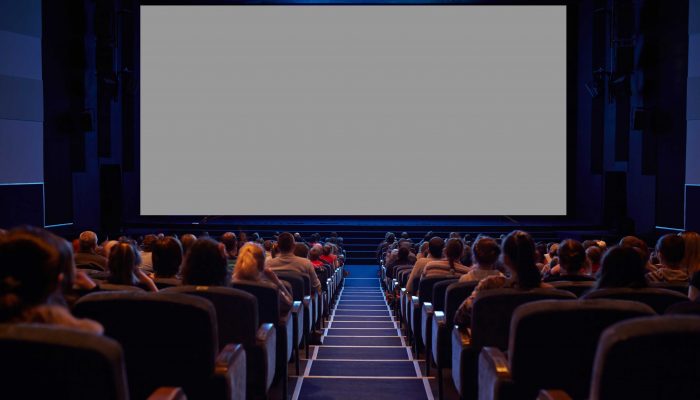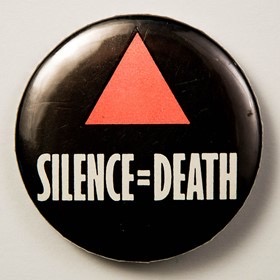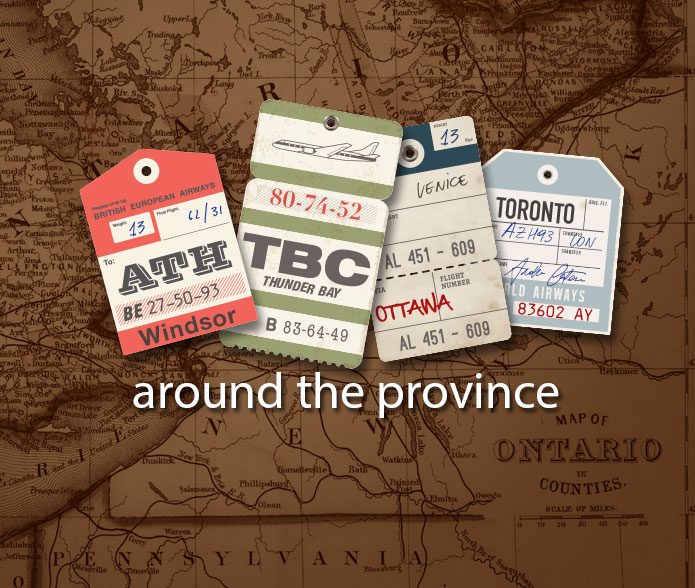Learn a librarian’s research into 2SLGBTQ+ Libraries and Archives, preserving queer history, and current activism efforts.

Library Pre-Shows: Making the Most of a Captive Audience
In the early weeks of my first liaison appointment, I wanted to observe as many classes in my program areas as I possibly could. Arriving 10 minutes before a large first-year History class, I noticed students shuffling into their seats and the large blank screen at the front of the room. I was struck at how the whole situation felt like the audience arriving at a movie theatre and waiting for the show to start.
Intrigued by the parallel with cinemas and keen to integrate Brock University’s James A. Gibson Library into the student learning experience, I decided to develop a novel educational strategy called a library pre-show.
What is a library pre-show?
Movie pre-shows are played at theatres before the film trailers start. Pre-shows contain trivia, interesting facts, and brief celebrity interviews.
Similarly, a library pre-show is a looping slideshow played while students are settling in during the 10 minutes before a class starts. The slides highlight issues related to information literacy or the library. The standalone presentation can be launched by the class instructor so a librarian does not have to be present while it is played.
Library pre-shows can have educational value.
While a movie pre-show is meant to entertain, a library pre-show is designed to educate. Slides with multiple-choice questions allow students to test their knowledge; interesting facts about the library or information sources encourage curiosity and intellectual growth; and promotional messages raise awareness about how the library can support students.
What library pre-shows have I made so far?
My first library pre-shows were for a second-year History class. Earlier in the year, I introduced myself to the students so they knew I was available. Later, the professor played library pre-shows in three consecutive weeks at a time when a research assignment was coming due. The pre-show contained “behind the scenes” facts about authentic historical research, quizzes about finding information and the peer review process. They also contained library promotions, such as my contact information.
As I was invited into other History or Interactive Arts & Science classes, I created new library pre-shows. While not every student was engrossed with the pre-show, I noticed many students watched some of it. On more than one occasion, students vocally answered the trivia questions only to learn they were wrong. To me, this demonstrates that library pre-shows have the potential to provide feedback on students’ prior knowledge.
Benefits of library pre-shows.
a) Library pre-shows are unobtrusive. If a teacher is unwilling to share class time, they might be willing to playing a pre-show before class starts.
b) Easy to implement. Using a library pre-show simply requires the teacher to start a PowerPoint presentation to run on the classroom projector screen.
c) Increase library’s outreach capacity. If displayed before each class in a 12-week semester, pre-shows can expand the library’s presence in a course by almost two hours.
d) Easy to produce. A library pre-show is easy to make: you only need enough slides to make a two-to-three minute PowerPoint presentation set to loop.
e) Create opportunity to connect with the community. As I created pre-shows, I began to include slides promoting activities in the students’ departments. For example, I included a slide about a movie the History department was screening. More recently, I’ve reached out to faculty for details about their research to include in “Faculty spotlights” slides.
Lessons learned.
a) Make them relevant. My impression is that it’s important to tailor a pre-show with content that is relevant to the students, their course, and what’s going on at that point in the semester.
b) Loop every two minutes. Having the pre-show loop every two minutes means more students will get a chance to see it. At 10 seconds per slide, a pre-show is only about 12 slides!
c) Do not include critical course content. Pre-shows aren’t a vehicle for conveying crucial information. Not all students arrive in time to see the pre-show so if there’s important information to convey, a librarian or the teacher should do it in the lecture.
Challenges.
a) Scheduling. Library pre-shows take advantage of the time when students are waiting for class to start. If the previous class runs late, then it eats into the pre-show time.
b) Faculty arrival. If faculty are required to start the slide presentation, then the library pre-show depends on them arriving several minutes before class starts.
Future directions.
From my perspective, library pre-shows are full of opportunities. Based on their feedback, students also see the potential. Discovering what is most educationally engaging requires further exploration.
I would also like to use the development phase of the pre-shows as an opportunity to build relationships within my liaison departments. If each pre-show contained three interesting slides about the department or a faculty member, then creating the pre-show provides an opportunity to engage the academic community.
An ambitious goal would be to integrate library pre-shows into every week of the largest first year History class, which has almost 800 students.
Library pre-shows are not a substitute for in-class teaching. But they do offer unique educational opportunities that I think are worth exploring.
Mark Weiler is a Liaison Librarian at Brock University. He can be reached at mweiler [at] brocku.ca.


